Buenos Aires is the vivacious capital of Argentina, a city with a harmonious blend of European grace and Latin American gusto, making it a fascinating perspective. The city, known for its cultural heritage, fiery tango music, and vital arts scene, offers this immersive experience through various influences. With its historical architecture, busy markets, and whirling neighbourhoods, all with something to say, Buenos Aires captivates its visitors. From walking wide boulevards to sipping a café in the shade of old trees or mixing with friendly locals, the city guarantees a fascinating trip, brimmed with charm, history, and quintessential authenticity, a very hallmark of a traveller’s unforgettable spot when yearning for an intense cultural experience.
Top 10 Places To Visit In Buenos Aires Argentina
Buenos Aires offers a mix of historical landmarks, cultural hubs, and vibrant neighbourhoods that make it an unforgettable destination. Here are ten places to visit in Buenos Aires city:
1. Plaza De Mayo

Photo: Roberto Fiadone / Wikimedia Commons
Plaza de Mayo is a historical and political site in Buenos Aires that has existed since the city was founded in 1580. The site has witnessed most of Argentina’s political actions, from the May Revolution of 1810 to the protests of the Madres de Plaza de Mayo, who continue their fight for justice regarding victims of Argentina’s military dictatorship. The square is surrounded by buildings central to the identity of the state: the Casa Rosada, a presidential palace notable for its pink façade, and the Cabildo, a colonial gate of the government which now houses a museum. The other building standing here is the Cathedral, which houses the remains of General José de San Martín, the national hero of Argentina.
Location: Monserrat neighbourhood, central Buenos Aires
Timings: 24*7
2. La Boca And Caminito
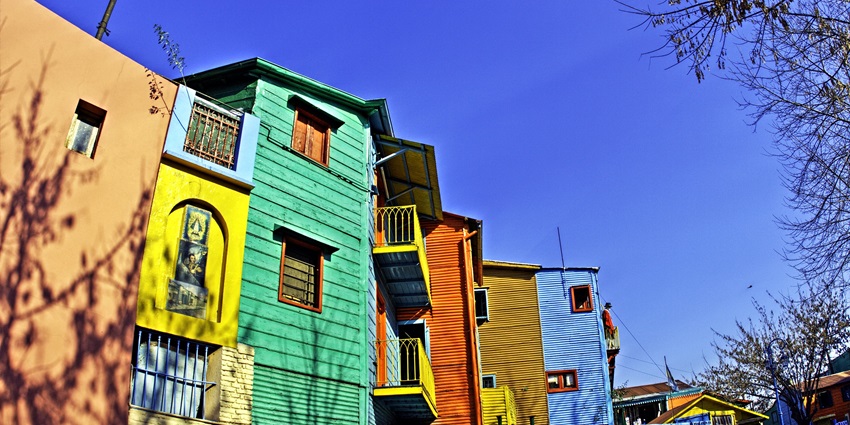
Photo: Luis Argerich / Wikimedia Commons
La Boca is renowned as one of Buenos Aires most colourful and magnificent neighbourhoods, filled with artistic culture and a long-standing history of Italian immigrants. The most well-known landmark in this neighbourhood is the Caminito, a pedestrian street that acts as an open air museum of sorts comprising amongst others brightly painted buildings, tango dancers performing on the sidewalks and local artists selling their creations. Originally the area was settled by Genoese immigrants who further built conventillos, shared tenement houses, then used the leftover ship paint to create the unique multicoloured aesthetic. The famous arena of Boca Juniors, one of the greatest Argentine football clubs, la Bombonera, finds its home in La Boca today.
Location: La Boca neighbourhood, southeastern Buenos Aires
Entry Fee: Free
3. Recoleta Cemetery

Photo: Cmasi / Wikimedia Commons
The Recoleta Cemetery is a highlight among cemeteries throughout the world, famed for its grand mausoleums, profuse sculptures, and historical importance. Established in 1822, the cemetery has an area of 14 acres, housing more than 6400 tombs. Some of the tombs belong to Argentina’s greatest figures, including past presidents, military leaders, and artists. An unreservedly adored First Lady, Eva Perón’s mausoleum is the most visited in the cemetery. The cemetery itself is a smorgasbord of architectural styles: Gothic, Art Deco, and Neoclassicism, with some describing it as a museum rather than a cemetery. Many mausoleums are made of imported European marble and contain generations of the same family.
Location: Junín 1760, Recoleta neighbourhood, Buenos Aires
Timings: 7 AM – 5:30 PM
4. Teatro Colón
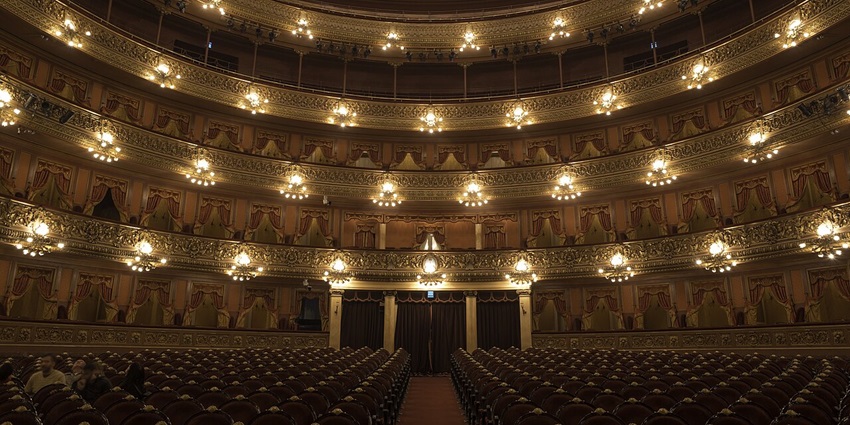
Photo: Jimmy Baikovicius / Wikimedia Commons
Teatro Colón is among the most prestigious opera houses in the world, renowned for its designs and acoustics. It was inaugurated in 1908 and now stars famous artists such as Luciano Pavarotti, Maria Callas, and Plácido Domingo. Its architectural style combines various European influences; its interiors are decorated with gold leaf, and Italian marble staircases, and the huge dome is decorated with a fresco by Raúl Soldi. The theatre’s main hall, which seats almost 2,500, is distinguished for its sound quality, considered among the world’s best. The theatre underwent major restoration from 2006 until 2010, when the old historical beauty was brought back, but everything that could be modernized in terms of facilities was modernized.
Location: Cerrito 628, San Nicolás neighbourhood, Buenos Aires
Entry Fee: Free
5. San Telmo

Photo: Ariel Barmat / Wikimedia Commons
San Telmo is surely one of the neighbourhoods in Buenos Aires that may date back to being so old and beautiful, showing colonial architecture, cobblestones, and a bohemian feel. Once a part of the city that fit the elite, it had turned into a working-class neighbourhood after a yellow fever epidemic back in the 19th century. Presently, San Telmo is now a cultural arena world-renowned for antique shops, art galleries, and tango. Among the highlights is the San Telmo Market, which was founded way back in 1897, allowing it to cater to so many people’s tastes through fresh produce, vintage items, as well as artisan products. Every Sunday, the famous San Telmo Fair fills Plaza Dorrego, drawing crowds to antiques, street performers, and tango dancers.
Location: San Telmo neighbourhood, central Buenos Aires
Timings: 10 AM – 8 PM
6. Palermo

Photo: Xerones / Wikimedia Commons
Palermo is, without a doubt, the largest and most fashionable neighbourhood in Buenos Aires. It’s known for its parks, boutique shops, and lively nightlife. The area is divided into several sub-districts, each with its own defining character. One of these is Palermo Soho, and which features among the most popular hotspots in the world of fashion, design, and gastronomy, with its sleek little cafés, independent boutiques, and a lively street art scene. One other sub-district of Palermo is known as Palermo Hollywood, which is quite the teeming place when it comes to bars, plus there are some gourmet restaurants as well. The other star feature of this area is the Japanese Garden, which provides a slow pace through the bustle of the city.
Location: Palermo neighbourhood, northern Buenos Aires
Best Time To Visit: Early Morning
7. Puerto Madero
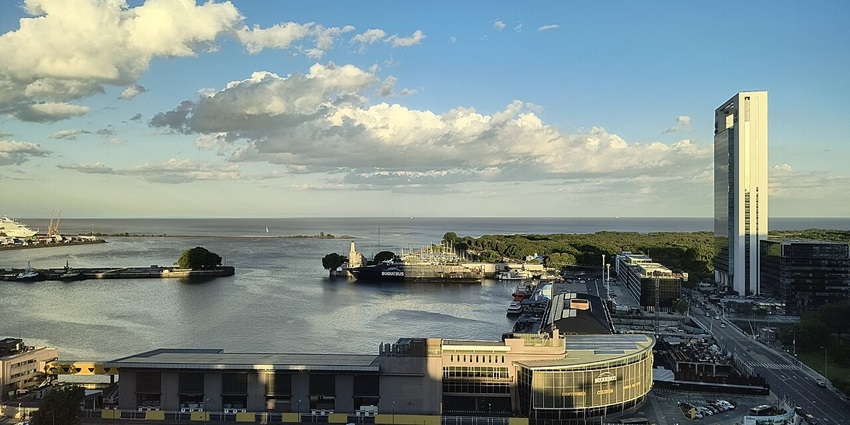
Photo: Vlasta x / Wikimedia Commons
Puerto Madero is the most modern, upscale district of Buenos Aires, established from an old port into a glitzy waterfront neighbourhood. Once neglected, an urban renewal process began in the 1990s, converting its red-brick warehouses into luxury apartments, fine dining restaurants, and cultural spaces. Puente de la Mujer-the highlight of Puerto Madero- is a breathtaking white pedestrian bridge designed by the Spanish architect Santiago Calatrava. The Ecological Reserve, a large green space along the Río de la Plata, provides walking and bike paths with stunning views of the city. The dining scene in Puerto Madero, famous for its steakhouses and international cuisine, attracts both locals and tourists alike.
Location: Eastern Buenos Aires, along the Río de la Plata waterfront
Timings: 24*7
8. Avenida 9 De Julio y Obelisco
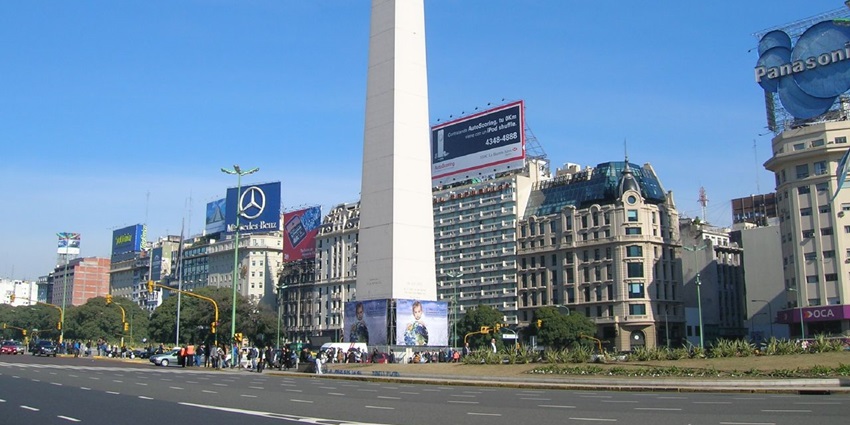
Photo: Victoria Rachitzky / Wikimedia Commons
Avenida 9 de Julio is one of the widest avenues in the world, with a width of 140 meters and as many as 16 lanes. Located at the heart of Buenos Aires, it bears the name of the day when Argentina achieved its independence. The most famous landmark in this avenue is the Obelisco that rises up to 67.5 meters and was built in the year 1936 as a commemorative monument for the city’s 400th anniversary. This Obelisco is at the junction of Avenida 9 de Julio and Avenida Corrientes, Buenos Aires’ entertainment district. The avenue also has some of the major buildings like the Teatro Colón and Ministry of Health, with the latter offering an iconic image of Eva Perón.
Location: Intersection of Avenida 9 de Julio and Avenida Corrientes, central Buenos Aires
Timings: 24*7
Entry Fee: Free
9. El Ateneo Grand Splendid

Photo: Deensel / Wikimedia Commons
The Ateneo Grand Splendid might be the loveliest bookstore in the world, housed in a former theatre built in 1919. Originally called the Grand Splendid Theatre, the building served as a significant Argentine venue until it became a bookstore in 2000, without any drastic interference in its original visual expressions. The stunning interior is complete with frescoed ceilings and ornate balconies, and of course, there is a grand stage, now used as a reading area. Thousands of books line the shelves, El Ateneo is a kind of paradise for all literature lovers, with many thousands of hours spent on end enjoying the selection of Spanish and international books. The bookstore also has a cafe for drinking and enjoying the architectural environment.
Location: Avenida Santa Fe 1860, Recoleta neighbourhood, Buenos Aires
Operating Hours: 9 AM – 9 PM
Entry Fee: Free
10. Museo Nacional de Bellas Artes
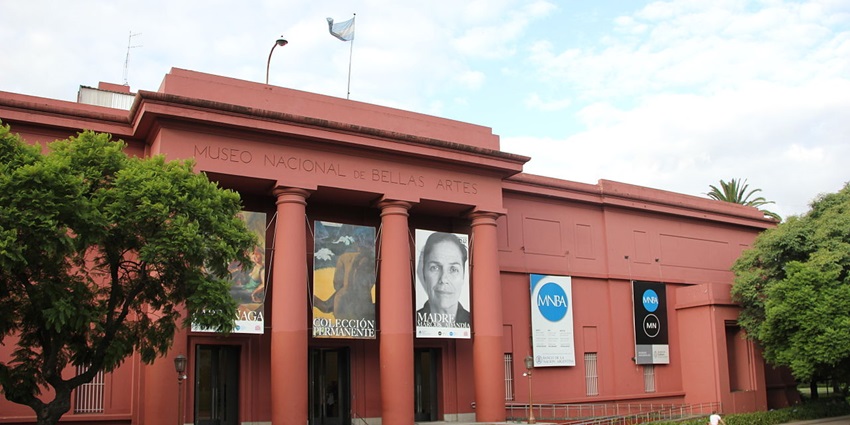
Photo: Lars Curfs / Wikimedia Commons
The Museo Nacional de Bellas Artes (MNBA) is the first measured art museum in Argentina, housing large collections of both national and international masterpieces. It was built in 1896 to exhibit the masterpieces of renowned artists such as Rembrandt, Goya, Van Gogh, and Monet along with some prominent Argentine painters such as Xul Solar and Benito Quinquela Martín. The museum store is permanent, including art from the Middle Ages to contemporary works, and it offers a wide-angle view of artistic movements over the centuries. The museum organizes temporary exhibitions, educational programs, and cultural activities all year round. All this, coupled with the great collection and its mission for artistic heritage, makes the Museo Nacional de Bellas Artes an invaluable asset to Buenos Aires’ culture.
Location: Palermo neighbourhood, northern Buenos Aires
Timings: Sunrise to Sunset
Entry Fee: Free
With its blend of history, culture, and modern feel, one cannot miss the occasion to visit Buenos Aires. Whether it is the artistic heritage, architectural wonders, or lively neighbourhoods that attract you, the city promises you an unforgettable experience. From sampling local cuisines to experiencing nightlife, every moment spent in Buenos Aires is full of discovery. Let TripXL help you create an impeccable itinerary with expert recommendations, seamless bookings, and exclusive offers. Start today on your journey of revealing the heart of Buenos Aires.
Cover Photo: Nikolai Kolosov / Pexels


 WhatsApp
WhatsApp
 Twitter
Twitter









